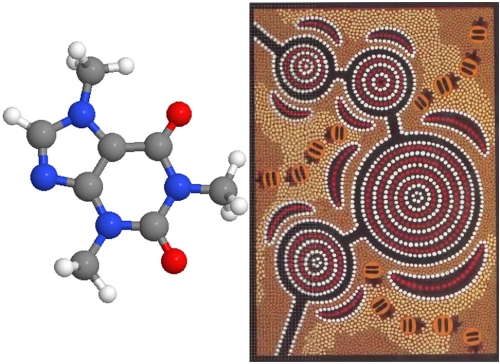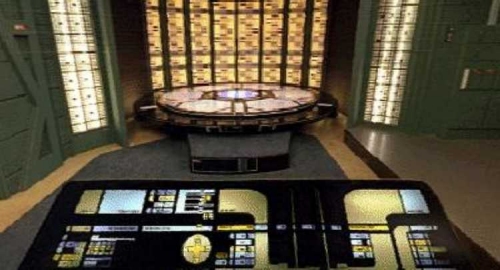Across the universe
So it is now time to consider the multiverse, or more particular the universe as it is defined by this new world…

Now it seems that Activeworlds offers licenses that enable a number of different configurations – “World” [hosted or not] which are a separate private place up to “Universe” which allows multiple worlds, remote hosting. We have chosen a U3000 license – this means [correct me if I am wrong please] multiple worlds, total of 9,000,000 square meters [that seems a lot right now] and up to 500 users online simultaneously.
This ties in with what I had envisaged: a “homeworld” of sorts, which I am terming “Offworld Homebase” and a cluster of related, connected worlds that you can teleport between. It allows a certain level of granularity that will allow other projects and space to grow in the future, but is suitable scalable as a model that it should suit our purposes nicely.
Users connect, initially, to Offworld Homebase as the initial login/connection point, and then from there travel to their chosen location if necessary. This level of abstraction could be useful, as the connection point is clearly not here – as in it is clearly on a different planet, so we have distanced ourself in the first stage. We might teleport to an “earth-like” place, but the distinction between reality and virtual world is a natural one. users should more readily accept the look and feel of the place if they know it is not trying to fake here, if that makes sense.
Homebase should have orientation, general skills, meeting and collaboration tools and places to select context, might have habitation and recreation but should also provide jump-points [a teleportery] to places of interest. These would include:
- Related learning objects – we can link to existing learning objects that can be used in the in-world browser – a lush and huge collection of existing multi-disciplinary interactive objects that are well integrated into existing curriculum
- Science Outstation – this could be on the same planet, or a different one but would provide additional bridges to sims that users could visit, explore, plan and create solutions for problems they perceive there
- Sandbox world – the builder’s play pen – somewhere people could go and learn to build – a mixture of tutorials and resources to allow citizens to explore construction options. It should include links of the web catalog of objects in the public object path.
- …other stuff [What do you reckon? What is IMPORTANT in the initial build? Is there anyone reading this?]
The design of Offword Homebase then becomes the next thing. I rather like the whole “cluster of domes” in a crater idea, each linked to each via passageways – if well thought out and modular this could work well, the layout of domes is an aesthetic challenge, but there are a number of visual aids, namely molecule pictures and a style of Indigenous Dot painting that symbolises “waterholes” that could be useful [and also provide useful graphical motif for later design work, textures and finesse]

I am still to find out the distance that chat drops out – if we have meeting rooms, chat in that room should not spill out into adjacent areas. Looking at big picture first, then will focus on minutiae when general layout is decided. Using design tenets, odd numbers usually look better than even numbers, and we can have domes of various sizes, orientations and materials.
Tags: activeworld, design, teleport, universe

I would like to see teleport and/or explicit curricular links to other Activeworlds – like Quest Atlantis. The bridge to these spaces would be natural and allow some cross-fertilization of ideas, talent and interest. Plus one worlds use would enhance the familiarity of the other. Anything that can decrease the size of the abstraction barrier for learners [teacehrs and students] in these new environments is a good thing IWHO.
I like your idea of a Homebase with an orientation etc. and where users can teleport off to other places of interest. I’m wondering though if the homebase or close to it should set the ‘scene’ or provide the ‘essential questions’ of discovery. So with my limited virtual world experience, I’m thinking I guess totally from the curriculum perspective – and am wondering if when they enter the world, they could be in a world of ‘eutopia’ – almost like a place of eden where perfection just about exists in every form… then they choose their pathways or worlds based on some key science concepts eg. Scenarios that provide students opportunities to explore, analyse & challenge eg. Dust bowl planet.
I’m really thinking out loud now, but hope you don’t mind me sharing this – with a big focus on science as our core curriculum area, I think that if we can tap into the areas of science that are generally not taught or learnt in primary schools (energy & change / natural & processed materials) in addition to other areas, that this would give the project a lot more opportunity for take up by teachers. So for example, in the world, can they actually perform science experiments (virtually) OR would that be where we would link to related learning objects? The sustainability overriding theme I think is still a great idea – the vision from the strategic plan is “Enough for all forever through caring for self, others and place” which fits nicely with our ideas for the world, don’t you think.. I’ve made contact with the project officer in town for the sustainability work, so am hoping to meet with him next week to find out a little more on what they will be doing and how we might align. I know that we also discussed the values framework – ie. Ecocitizen, creative citizen, healthy citizen etc. and am wondering if this is still feasible or are we potentially going to have too many concepts within the world…..need to think on this one. I’m hoping to do a bit of a concept map today that might make this make some sort of sense..
Sandbox world sounds great… I know with Lissa’s project they had the assistance of in world mentors and this worked well but not sure that we can achieve this within our timelines, however Lissa has offered for her students to help us out if needed; but having that self help section where like minded people are together sorting out their own needs is a great idea! I also like the idea of the web catalog of objects – especially for this age group and it also gives them more opportunity to focus on creating solutions and not getting bogged down with the technical aspects of the world!
So in the initial build my thoughts are that we need:
* place for collaboration and meeting (community building)
* sandbox world (to experiment, play etc.)
* a scene to set the scene…. eg. essential questions to start them thinking on a (maybe choice) of concepts that they will choose to focus on….
The idea of context is really important I agree and should be one of many purposes of the homebase. It should allow us/them to see purposes for research – the “why am I here” type things – this could either be done in homebase or in the “science outstation”. Initially I thought the outstation was the best way to do that – ie. kids get orientated, meet and so on at homebase, then “put on their scientist hat” and visit the science outpost to start to scientifically investigate the issues we identify as important.
The science outpost is on the homeworld, just some distance away from homebase [requiring a teleport or a really long walk] that way chat, whispers and other homebase interference does not cloud science outpost instruments etc [just using more of the space on this planet, if that makes sense]. We can provide teleport and possible a surface buggy/tube lift/jet pack to travel between facilities.
We are on the same page here as I see homebase as a meet, greet and orientation, science outpost is the place to explore science concepts and branch to the challenge/solution part of the world – both these are on the same “world” – construction zone/sandbox could be also; learners then branch out looking at specific concepts. “Eden” sounds like a nice way to provide one reference of an exemplar environment – a reference that learners could then use to compare other less balanced environments and try to determine similarities, differences, problems and therefore solutions
I am yet to have any success with the SDK [but cannot experiment at all with that sort of programming until I have access to the object path, and Q2 does not give me such access, so I have to wait until our new universe server is up] so I am not sure what capabilities in-world programming has – certainly we can link to the many rich and interesting learning objects already – that is easy. Ideally I would also like to include in-world virtual experimentation but do not yet know if Activeworlds is capable of that [certainly I know Secondlife is, but it’s object and world model in Activeworlds is different]